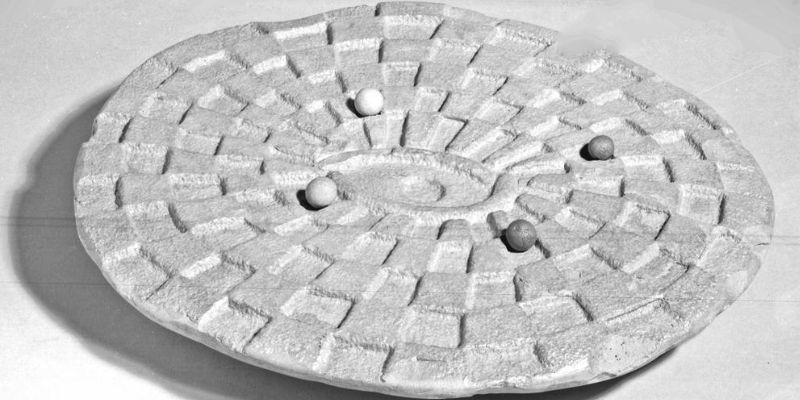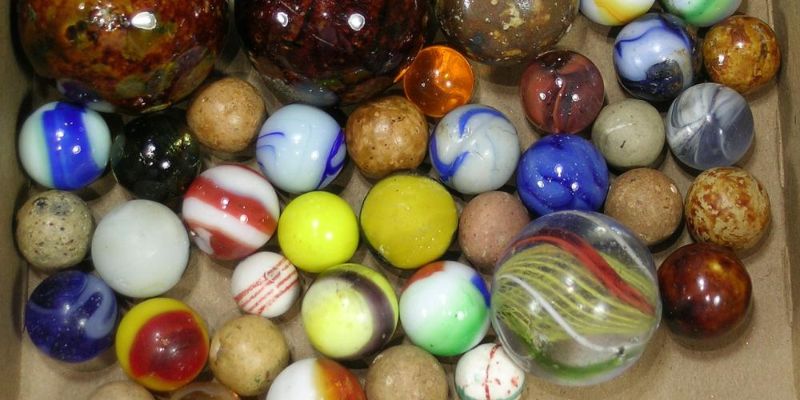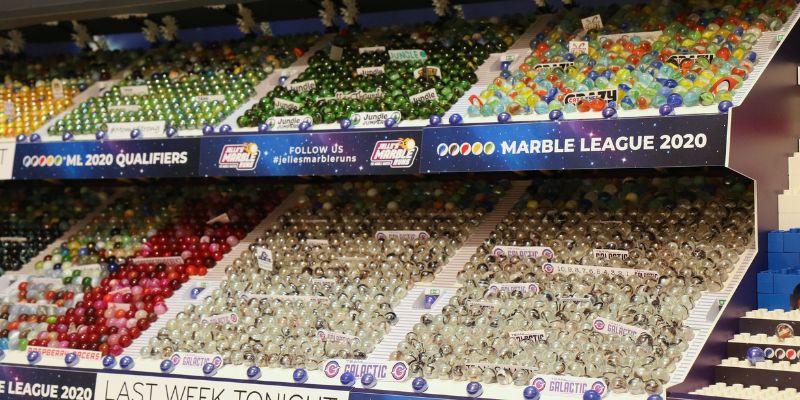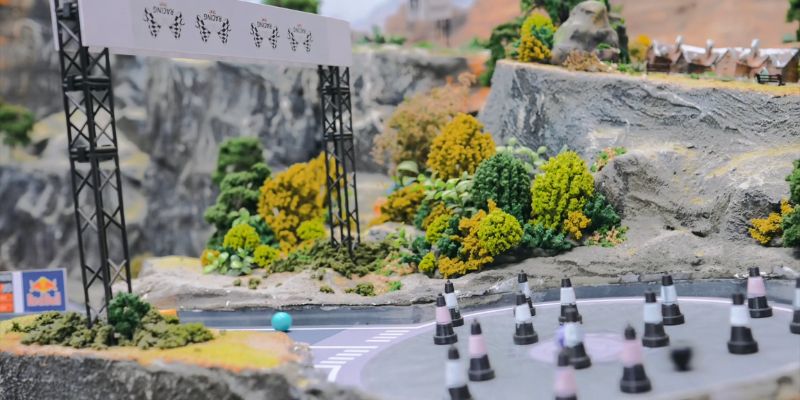The captivating world of marble racing, where tiny spheres become athletes, is a testament to human ingenuity and the enduring appeal of simple yet thrilling competition. While marble racing might seem modern, its roots stretch back through the annals of history, evolving from ancient pastimes to the digital spectacle we know today.
In this journey through marble racing history, we’ll uncover the ancient origins of marbles and games, trace the sport’s rise to prominence in the 20th century, explore the digital revolution that catapulted it to global fame, and delve into the ever-evolving world of track design. Finally, we’ll gaze into the crystal ball to envision the future of marble racing, where innovation and passion continue to propel this beloved sport to new heights.
Ancient Origins: Marbles and Games Throughout History
The allure of marbles transcends time and culture, with evidence of their existence dating back thousands of years. While the exact origins of marble games remain mysterious, archaeological findings and historical records offer glimpses into the fascinating role marbles played in ancient civilizations.

Ancient Egypt: Early Beginnings
In Ancient Egypt, smooth stones resembling marble have been discovered in tombs dating back to 3000 B.C. These early “marbles” were likely used for simple games and pastimes to entertain children and adults. Their presence in burial sites suggests that marbles held some cultural significance, possibly symbolizing leisure or status.
Ancient Rome: Popular Pastime
The Roman Empire embraced marbles with gusto, with children and soldiers enjoying various games involving these small spheres. Roman poet Ovid even referenced a marble game in his epic poem “Metamorphoses,” indicating the widespread popularity of marbles. These games provided a source of relaxation and amusement, offering a break from the rigors of daily life and military duties.
Mesoamerica: Cultural Significance
Marble-like objects made of stone or clay have been found in ancient Mesoamerican sites, suggesting that marbles played a role in the cultural and recreational activities of civilizations like the Aztecs and Maya. These marbles may have been used in rituals or as part of traditional games, reflecting their importance in Mesoamerican society.
Medieval Europe: Continued Tradition
Marbles continued to be popular throughout the Middle Ages in Europe, with games like “Nine Men’s Morris” and “Cherry Pit” incorporating marbles as essential components. These games often involved skill, strategy, and a touch of luck, much like modern marble racing. The medieval period saw the development of new marble games, which people of all ages and social classes enjoyed.
Renaissance and Beyond: Artistic Flourish
The Renaissance saw a resurgence of interest in marble, with artists and craftsmen creating intricate and beautifully decorated marbles for collectors and enthusiasts. Marble games continued to evolve, with new variations and rules emerging across regions. This period marked the transition of marbles from simple playthings to objects of artistic and cultural value.
The Evolution of Marble Games
While the earliest marble games were likely simple affairs, they gradually evolved into more structured and competitive activities. Some popular historical marble games include:
- Ring Taw: A game where players try to knock marbles out of a circle drawn on the ground.
- Bridge Board: A game involving a wooden board with arches where players roll marbles to score points.
- Ringer: A game where players attempt to land their marbles in a small hole.
- Nine Men’s Morris: A strategy board game played with marbles as game pieces.
These games laid the foundation for the modern sport of marble racing, showcasing the enduring appeal of marbles as a source of competition, skill, and entertainment.
The Enduring Legacy of Ancient Marbles
The ancient origins of marble and marble games demonstrate the universal appeal of these small, round objects. Across cultures and centuries, marbles have provided a source of joy, competition, and creative expression. The legacy of these ancient games lives on in the modern sport of marble racing, where tiny spheres continue to captivate audiences and inspire innovation. Marbles have transcended time, evolving from ancient relics to contemporary sports icons, proving their timeless charm.
Marble Racing’s Rise in the 20th Century
The 20th century marked a turning point for marble racing, transitioning from a casual pastime to a more organized and competitive sport. While marbles had been enjoyed for centuries, it was during this era that formal leagues, championships, and dedicated tracks emerged, laying the groundwork for the global phenomenon we see today.

The Birth of Organized Competition
In the early 1900s, marble racing started to gain traction as a legitimate sport, with organized events popping up across Europe and the United States. These early competitions often took place on simple, makeshift tracks, but the enthusiasm and competitive spirit of the participants were undeniable.
The British and World Marbles Championship
A significant milestone in marble racing history was the establishment of the British and World Marbles Championship in 1932. Held annually in Tinsley Green, West Sussex, England, this prestigious event attracted players from around the globe and showcased the sport’s growing international appeal.
Schools and Community Organizations: Nurturing Young Talent
Marble racing also found a home in schools and community organizations, where it was embraced as a fun and educational activity. Children of all ages participated in marble tournaments, learning valuable sportsmanship, strategy, and hand-eye coordination lessons. These grassroots efforts helped cultivate a new generation of marble racing enthusiasts, ensuring the sport’s continued growth and popularity.
The Rise of Marble Racing Media
The 20th century also saw the emergence of marble racing media, with newspapers and magazines covering major events and profiling top players. This increased visibility helped to further popularize the sport, attracting new fans and participants.
The Legacy of the 20th Century
The 20th century was a pivotal era for marble racing, establishing it as a legitimate sport with a dedicated following and a rich history. The foundations laid during this time paved the way for the digital revolution of the 21st century, where marble racing would reach unprecedented popularity and global reach. The legacy of the 20th century lives on in the traditions, techniques, and competitive spirit that continue to define marble racing today.
The Digital Age: Marble Racing Goes Viral
The internet and social media ushered in a new era for marble racing, transforming it from a niche hobby to a global sensation. These digital platforms provided marble racing enthusiasts unprecedented opportunities to share their passion, connect with fellow fans, and showcase their creativity to a worldwide audience.

YouTube: The Catalyst for Marble Mania
YouTube played a pivotal role in the viral explosion of marble racing. The platform’s accessibility allowed creators to share videos of their races with a massive audience, sparking newfound interest in the sport.
Jelle’s Marble Runs: A Digital Revolution
Leading this digital revolution was Jelle’s Marble Runs (JMR). Created by Dutch brothers Jelle and Dion Bakker, JMR transformed marble racing videos into captivating sports entertainment. Their meticulously crafted tracks, engaging commentary, and lovable marble personalities resonated with viewers of all ages, catapulting them to internet stardom.
JMR’s Innovative Approach Included:
- High-Quality Production: Professional cameras, editing, and sound design elevated the viewing experience.
- Engaging Commentary: Humorous and informative commentary added a layer of entertainment and personality to the races.
- Character Development: Each marble was given a unique name, backstory, and personality, making it relatable and engaging to viewers.
- Diverse Race Formats: JMR introduced various race formats, including the Marble League, Marbula One, and other special events, keeping the content fresh and exciting.
The JMR Effect
JMR’s success sparked a wave of creativity within the marble racing community. Fans and creators alike were inspired to build their own tracks, design custom marbles, and share their creations online. This led to a surge in marble racing content on YouTube and other platforms, further fueling the sport’s popularity.
Beyond JMR: The Rise of Marble Racing Channels
JMR’s influence extended beyond its channel, inspiring many other creators to join the marble racing scene. Many talented individuals and teams began producing their own marble racing videos, each with their unique style and approach.
Notable Channels Include:
- M&M’s Racing Channel: Known for its high-quality production values and exciting races.
- The Marble League (TML): A community-driven league focusing on teamwork and sportsmanship.
- MarbleLympics: A series of events inspired by the Olympic Games featuring a variety of marble sports.
- MeltyCat: A popular creator known for their creative track designs and heartwarming stories.
The Impact of Social Media
Social media platforms like Twitter, Instagram, and Facebook played a crucial role in amplifying marble racing’s reach. Fans connected with their favorite teams and creators, sharing their enthusiasm and excitement for the sport. Hashtags like #marbleracing and #marbleleague trended worldwide, further solidifying marble racing’s place in popular culture.
The Rise of Esports
The digital age also paved the way for marble racing to enter the realm of esports. Online platforms and leagues emerged, allowing players worldwide to compete in virtual marble races. This added a new dimension to the sport, attracting a wider audience and creating new opportunities for amateur and professional racers.
The Digital Age’s Lasting Impact
The digital age transformed marble racing from a niche hobby into a global phenomenon. The internet and social media allowed the sport to flourish, connecting fans and creators worldwide. This digital revolution’s creativity, innovation, and passion continue to shape the sport today, ensuring that marble racing remains a vibrant and exciting spectacle for years.
The Evolution of Marble Racing Tracks
The heart of marble racing lies in its tracks—the intricate courses that challenge and thrill both marbles and spectators. Over time, these tracks have evolved from simple slopes and dirt paths to elaborate engineering marvels, incorporating diverse materials, innovative designs, and complex mechanisms that push the boundaries of creativity and ingenuity.

Early Days: Humble Beginnings
In the early days of marble racing, tracks were often makeshift affairs, crafted from readily available materials like wood, cardboard, or sand. These rudimentary courses lacked the complexity and polish of modern tracks. Still, they provided the essential elements for a fun and competitive race: a starting point, a finish line, and a few twists and turns.
The Rise of Dedicated Tracks
As marble racing gained popularity, dedicated tracks began to emerge. Built by passionate enthusiasts who invested time and resources into crafting more elaborate and challenging courses, these tracks used materials like plastic, metal, and glass, allowing for greater precision and durability.
Key Features of Early Dedicated Tracks Included:
- Banked Curves: Sloped turns that allowed marbles to maintain speed and prevent them from flying off the track.
- Jumps and Drops: Elements that added verticality and airtime to the races.
- Obstacles and Challenges: Creative obstacles like tunnels, bridges, and water hazards added difficulty and excitement.
The Digital Age: A New Era of Track Design
The advent of the digital age revolutionized marble racing track design. With the rise of online platforms like YouTube, creators could showcase their tracks to a global audience, sparking innovation and creativity.
Digital Tools and Innovations:
- 3D Printing and CAD Software: Enabled builders to create increasingly complex and visually stunning tracks.
- Interactive Elements: Moving parts, spinning obstacles, and other dynamic elements added unpredictability to the races.
- Themed Environments: Tracks that resemble real-world locations or fantastical landscapes, immersing viewers in a unique and engaging experience.
- Modular Designs: Tracks constructed in sections that could be easily rearranged and customized, allowing endless possibilities and variations.
Modern Marvels: Pushing the Boundaries of Innovation
Today, marble racing tracks continue to evolve rapidly. Creators constantly push the boundaries of what’s possible, experimenting with new materials, technologies, and design concepts.
Innovative Features of Modern Tracks:
- Gravity-Defying Loops: Marbles race through towering loops and spirals, defying gravity.
- Interactive Puzzles: Marbles must solve puzzles or trigger mechanisms to progress through the track.
- Multi-Level Courses: Tracks span multiple levels, with marbles navigating complex systems of elevators, ramps, and chutes.
- Realistic Simulations: Tracks designed to simulate real-world environments, such as cities, forests, or even outer space.
The evolution of marble racing tracks is a testament to the community’s ingenuity and passion. As technology continues to advance, we can expect even more exciting and innovative track designs in the future. The possibilities are endless, limited only by the builders’ imagination.
The Future of Marble Racing & Marble Magic
As marble racing continues to captivate audiences worldwide, its future has the potential for more significant innovation, expansion, and excitement. The sport’s unique blend of simplicity, creativity, and competitive spirit positions it for a bright future filled with new technologies, emerging leagues, and a growing global community.

Technological Advancements
Technology has already played a significant role in the evolution of marble racing, enhancing everything from high-definition camera footage to sophisticated timing systems. The future promises even more exciting possibilities:
- Virtual Reality (VR) and Augmented Reality (AR): Imagine immersing yourself in the action, experiencing the race’s thrill from a marble’s perspective. VR and AR could revolutionize how fans interact with the sport, offering a truly immersive and interactive experience.
- Artificial Intelligence (AI): AI could analyze race data, predict outcomes, and even create virtual marble racers that compete against humans. This could open up new avenues for competition and entertainment and provide valuable insights for track designers and athletes.
- Interactive Tracks: Tracks could be designed with sensors and interactive elements that respond to the marbles in real time, creating a more dynamic and engaging racing experience. Imagine marbles triggering traps, activating special effects, or even influencing the course of the race itself.
Expansion and Growth
Marble racing’s popularity continues to soar, bringing the potential for significant growth and expansion. We can expect to see
- New Leagues and Competitions: As the sport gains traction, new leagues and competitions will likely emerge, offering more opportunities for marbles and their teams to showcase their skills. These leagues could focus on specific types of races, regions, or skill levels, catering to a diverse range of interests and abilities.
- Global Reach: Marble racing is already enjoyed by fans from around the globe, but its reach is poised to expand even further. With the increasing availability of online platforms and streaming services, marble racing events can be accessed by anyone, anywhere, breaking down geographical barriers and fostering a truly global community.
- Mainstream Recognition: As marble racing grows in popularity, it could gain recognition as a legitimate mainstream sport. This could increase media coverage, sponsorships, and even professional marble racing teams, further elevating the sport’s profile and attracting a wider audience.












